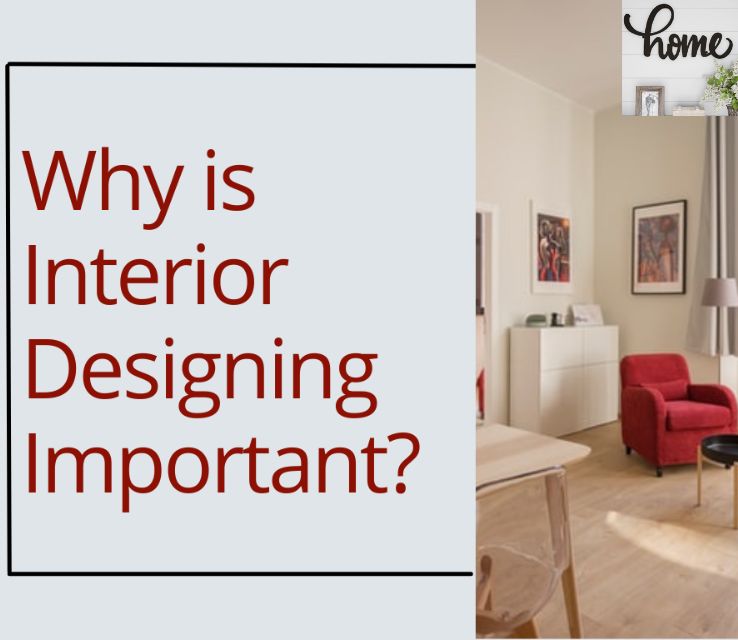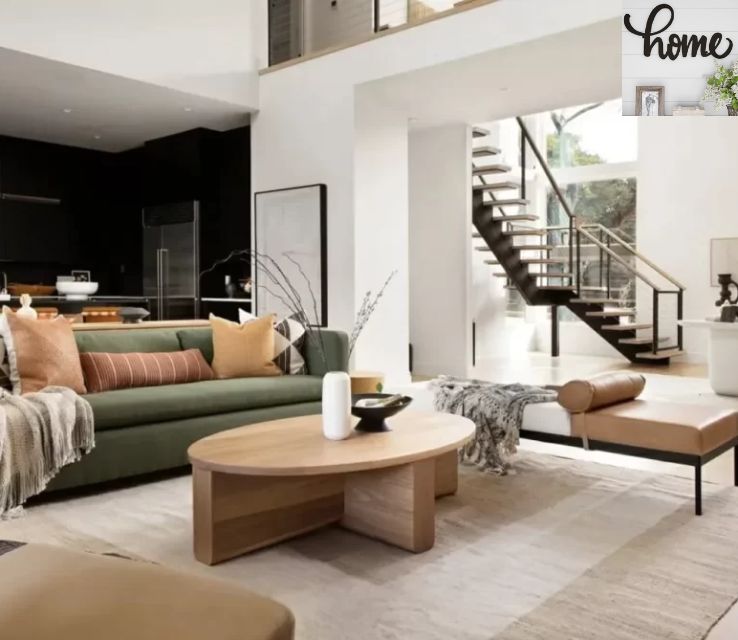A home that perfectly encapsulates your essence sounds dreamy. Achieving that ideal environment is possible through thoughtful interior design, which goes far beyond mere decoration, it’s about crafting spaces that mirror your personality and lifestyle.
With an overwhelming array of styles available today, finding the right fit can be challenging. Whether you are redecorating a single room or rethinking your entire home, understanding these diverse design styles is the first step toward creating an inspiring sanctuary. We will walk you through the most popular Interior Design Styles and how to make them uniquely yours.
Why Interior Design Is Important?
Interior home design transcends mere aesthetics; it profoundly impacts our emotional and psychological well-being. The spaces we inhabit can influence our mood, productivity, and even relationships. Thoughtfully designed environments foster a sense of comfort and belonging, making it essential to curate spaces that reflect our personal identities while promoting harmony.

By integrating elements like natural light, color psychology, and functional layouts, interior design creates an atmosphere that nurtures creativity and tranquility. A well-designed home can enhance functionality and efficiency. With the rise of remote work and flexible living arrangements, the demand for adaptable spaces has never been greater. Innovative design solutions multi-functional furniture or designated zones for work and relaxation, enable us to maximize our living areas without sacrificing style.
The Interior Design Styles
Modern Style
Modern interior design thrives on a neutral color palette dominated by whites, blacks, and greys, creating a serene backdrop that allows the architecture and furniture to take center stage. This style is characterized by clean, straight lines that promote a sense of order and simplicity, reflecting the ethos of “less is more”.
The minimal use of decor not only emphasizes functionality but also invites an uncluttered aesthetic that can transform any space into a tranquil retreat. Furniture in modern design often showcases functional forms with little ornamentation, prioritizing comfort without compromising on style. Pieces made from metal, glass, and steel add an industrial edge, seamlessly blending form with function.
Contemporary Style
Contemporary style is a celebration of the present, emphasizing soft, curved lines that create an inviting flow throughout living spaces. This aesthetic invites comfort while steering clear of rigid structures, allowing for a harmonious balance between form and function. With open floor plans being a hallmark of contemporary design, the seamless transition between rooms fosters a sense of unity, encouraging social interaction and a relaxed atmosphere.
Incorporating a mix of materials and textures adds depth to contemporary interiors, transforming them into dynamic environments. Think smooth glass paired with rustic wood, or sleek metal juxtaposed against plush fabrics; this interplay enhances visual interest without overwhelming the senses
Traditional Style
Traditional style interior design exudes a timeless elegance, characterized by ornate furniture with carved wood that tells a story of craftsmanship and heritage. Each piece often serves as a focal point, drawing the eye with intricate details and rich textures. This style thrives on classic patterns like florals, damask, and stripes, which not only add visual interest but also evoke a sense of nostalgia.
These patterns can be incorporated into upholstery, drapery, or even wall coverings, creating a cohesive look that feels both luxurious and inviting. A warm color palette is essential in traditional design, enveloping spaces in hues like deep burgundy, rich golds, and soft creams that foster comfort and sophistication.
Transitional Style
Transitional style effortlessly bridges the gap between traditional and contemporary design, creating spaces that are both timeless and inviting. By embracing neutral colors, this aesthetic allows for a soothing palette that serves as a perfect backdrop for personal expression.
The beauty of transitional interiors lies in their ability to combine simple lines with traditional elements, resulting in an elegant yet approachable environment. Think sleek furniture silhouettes paired with classic moldings or vintage-inspired accessories that add character without overwhelming the space.
Minimalist Style
Embracing the minimalist style invites a sense of tranquility and order into the home, where every element serves a purpose. By utilizing neutral color schemes, designers create a serene backdrop that enhances the feeling of spaciousness, allowing the mind to unwind.
This approach emphasizes bare essentials and functional furnishings, ensuring that each piece contributes to both aesthetics and utility. Imagine a living area adorned with a sleek, low-profile sofa paired with a simple coffee table, each item thoughtfully chosen to foster relaxation without overwhelming the senses.

Scandinavian Style
Scandinavian style epitomizes simplicity and functionality, creating spaces that are both inviting and practical. Characterized by white walls and light wood floors, this design aesthetic utilizes natural materials such as wool, leather, and wood to evoke a sense of warmth and connection to nature.
The careful selection of functional yet stylish furniture ensures that every piece serves a purpose while adding to the overall aesthetic. Imagine a sleek, minimalist sofa paired with a handcrafted wooden coffee table, this balance between form and function is the essence of Scandinavian design.
Industrial Style
Industrial style embodies a raw, urban aesthetic that celebrates the beauty of unfinished spaces. Characterized by exposed brick walls, visible ductwork, and pipes, this design approach effortlessly merges functionality with an edgy appeal. The use of concrete or weathered wood floors adds to the rugged charm, grounding the space in a sense of authenticity.
This style thrives on an open-concept layout, allowing light to flow freely while emphasizing the spaciousness often found in repurposed warehouses or factories. Metal and wood furniture play a crucial role in enhancing the industrial vibe, creating a striking contrast that speaks to both durability and warmth.
Bohemian (Boho) Style
Bohemian (Boho) style is a vibrant celebration of individuality, where bold colors and patterns harmoniously intertwine to create spaces that are as eclectic as the personalities who inhabit them. This design approach invites a myriad of textures and layers, often featuring layered rugs, throws, and textiles that evoke warmth and comfort.
The Boho aesthetic is not just about filling a room; it’s about curating a narrative through each piece, blending global influences, from Moroccan lanterns to Indian block prints, that tell stories of far-off travels and cultures. At the heart of Bohemian decor lies a penchant for vintage or secondhand furniture, allowing for unique character and charm in every corner.
Farmhouse Style
Farmhouse style embraces a warm, inviting atmosphere that marries rustic charm with modern sensibilities. At the heart of this aesthetic are shiplap walls and wood beams, which evoke a sense of history and authenticity. These elements serve as a backdrop for spaces that prioritize comfort and functionality, allowing homeowners to create a sanctuary that feels both lived-in and stylish.
The use of neutral, earthy colors enhances this ambiance, promoting a serene environment that resonates with nature. A key feature of farmhouse design is the incorporation of vintage or repurposed furniture, each piece telling its own story while contributing to the overall character of the home. Open shelving showcases an array of curated items, from rustic dishware to beloved books, making the space feel personal and welcoming.
Coastal Style
Coastal style breathes life into interiors with its refreshing palette of whites, blues, and sandy neutrals, echoing the serene beauty of the seaside. This design aesthetic thrives on the interplay of natural light and open spaces, creating an airy atmosphere that invites relaxation. Imagine sun-drenched rooms adorned with light, sheer curtains that flutter gently with the ocean breeze, enhancing the tranquil vibe. The color scheme not only reflects the beach but also acts as a soothing backdrop for vibrant nautical or seaside accents that add character and whimsy to the space.
Mid-Century Modern Style
Mid-Century Modern style is a celebration of simplicity and functionality, characterized by its iconic low-slung furniture that invites relaxation and conversation. This design aesthetic shines through in pieces that feature clean lines and organic forms, often crafted from rich woods like teak paired with sleek metal elements. The clever use of space encourages an open flow, making homes feel both spacious and welcoming, a hallmark of mid-century design philosophy.
Bold colors such as orange, teal, and mustard add vibrancy to the minimalist backdrop, creating visual interest without overwhelming the senses. These hues often appear in accent pieces, upholstery, or art, harmonizing with geometric patterns that echo the era’s fascination with shapes.
Read More: Top 10 Genius Space Saving Kitchen Design Ideas for 2025
Eclectic Style
Eclectic style thrives on the beauty of diversity, seamlessly blending mixed materials and textures to create a space that feels both vibrant and deeply personal. Imagine a room adorned with a vintage Persian rug juxtaposed against sleek, modern furniture, or an art deco lamp perched beside a contemporary sculpture.
This harmonious clash invites conversation and curiosity, encouraging homeowners to showcase their unique journeys through statement pieces that tell a story. Bold colors and patterns play a pivotal role in this design approach, allowing for an expressive palette that defies convention.
Conclusion
Exploring various Interior Design Styles allows us to express our individuality and create spaces that resonate with our personal tastes. From the sleek lines of modernism to the rustic charm of farmhouse aesthetics, each style offers unique elements that can transform any room into a sanctuary.
These styles not only enhances our design choices but also helps us appreciate the rich history and culture behind each one. As you embark on your own interior design journey, consider blending different styles to create a cohesive and personalized environment.
FAQs
What are the main types of interior design styles?
There are several main types, including Modern, Contemporary, Traditional, Industrial, Bohemian, Minimalist, Scandinavian, and Rustic, each with its unique characteristics and aesthetics.
Can I mix different interior design styles?
Mixing styles can create a unique and personalized look. Aim for a cohesive color palette or common elements to maintain harmony in the space.
What is the difference between modern and contemporary design?
Modern design refers to a specific historical movement from the early to mid-20th century, while contemporary design is ever-evolving and reflects current trends and technologies.
What role do colors play in defining an interior design style?
Colors greatly influence mood and perception. Each style has a typical color palette, such as neutral tones for Scandinavian or bold colors for Bohemian, so choose hues that align with your chosen style.
